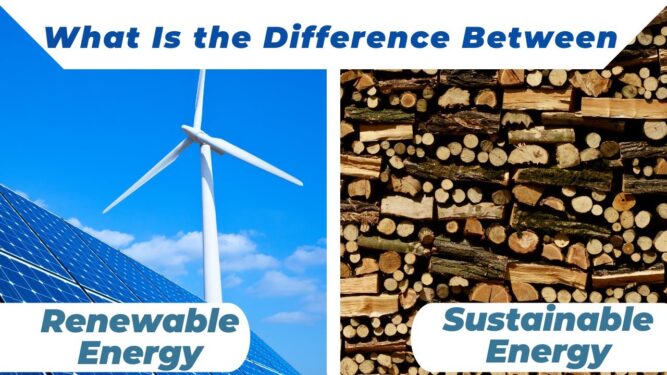CLIMATE change issues in the context of environment, social and governance (ESG) framework are key drivers of corporate Malaysia’s decision-making priorities today and the race to achieve the net zero target has also been adopted by the Malaysian government.
Energy generation is one of the biggest factors contributing to climate change as 60% of total global greenhouse gas (GHG) emissions come from a diverse range of energy generation platforms.
In view of this, the world is transitioning from fossil fuel-based energy generation to renewable energy (RE) solutions. According to data provided by IRENA, global RE generation capacity will reach 3,372 GW by the end of 2022, an increase of 295 GW or 9.6% year-on-year.
A well-defined RE road map?

The Malaysia Renewable Energy Road Map (MyRER) that was launched in 2021 has mapped out Malaysia’s RE aspirations, targeting to achieve a RE share of 31% or 12.9 gigawatts (GW) in 2025 and 40% or 18.0 GW in 2035 and up to 70% by 2050.
As of the end of 2022, Malaysia had achieved a 25% RE share in terms of total generation capacity and was well on its way to achieving the targets set for 2025, 2035, and perhaps 2050 too, when the world was ready to be net zero.
Malaysia’s journey towards embracing RE has primarily been focused on facilitating the growth of large-scale solar (LSS) power. Other considerations include hydro, bioenergy and geothermal energy generation.
While the push towards more ‘green’ energy generation is a step in the right direction, the question we should ask is whether the current stable of RE generation platforms being considered and incentivised are truly ‘green’ and ‘clean’ as well as efficient?
RE vs Sustainable Energy (SE)

‘Renewable Energy’ and ‘Sustainable Energy’ are often used interchangeably to the extent that most people believe that all RE is sustainable. However, there is a marked difference between the two.
Renewable energy is energy that is created and replenished naturally. These include energy that is derived from the sun (solar), water (hydro) or plants (biomass). This is as opposed to non-renewable energy like coal, petroleum and natural gas, which are derived from fossil fuels that cannot be regenerated.
Nevertheless, renewable energy does not consider the entire process or system that comes into play in generating the energy or whether the process (from start to scrap) impacts the environment and society in anyway.
Sustainable energy, on the other hand, is energy produced from a renewable source (ie wind, water, sun and heat) through a production process that has minimal impact on the natural environment.
The energy production process has to take a comprehensive perspective into consideration, be it in the way it operates, the materials used to create the platform, the by-products of its operations, or the impact of the platform once it is decommissioned.
Let’s look at solar energy for example. Solar energy seems to be a natural choice when one talks about RE as the power of the sun can be replenished and is unexhaustive, at least for the next couple of billion years.
Solar power has also gained a strong foothold as the cost of production has plummeted, making it more affordable for the mass market to go solar.
While generating energy from solar power has numerous advantages over traditional fossil fuels, there are some drawbacks.
Silicon is one of the most commonly used materials to produce solar panels. When silicon is shaped to form the solar panel, it creates what is known as a toxic slag by-product, which requires a careful process of discharge due to its hazardous nature.
LSS is also damaging to the environment as it requires a large land mass and may cause land degradation or in some cases deforestation, which also impacts wildlife.
While all RE solutions may have their pros and cons, is sustainable energy generation possible or is this concept a figment of science fiction?
The journey to sustainability

Yes, sustainable energy is possible. However, the technology available today has not provided for a truly sustainable, green and clean energy solution and it may still be a long way before such technology is available for deployment.
Hence, in the journey towards embracing sustainable energy, we should be looking at technologies that maximise efficiencies while minimising impact on the environment from a holistic perspective. The introduction of advanced technologies like combined energy generation (cogeneration) and waste heat recovery (WHR) may unlock new levels of efficiency in energy generation.
Cogeneration is the use of a heat engine to generate electricity and heat at the same time. Normally, heat that is the by-product of electricity generation is often wasted or unused.
Moreover, Cogeneration plants recover otherwise wasted thermal energy from electricity generation for heating, known as combined heat and power district heating. The technology also allows the by-product heat to be used in absorption refrigerators for cooling.
The technology benefits both consumers and society in terms of increased energy efficiency, as it is 40% more efficient than the separate generation of heat and power, lower emissions and reduced energy costs. Cogeneration systems can also run on any renewable fuel.
Cogeneration plants are able to generate energy from 1000 kW and above to achieve economies of scale, and they are flexible enough to supply heat and electricity to all types of users including factories and manufacturing facilities in Malaysia.
Today, cogeneration systems have been deployed successfully in Europe and Asia and is gaining popularity worldwide.
The WHR system on the other hand, captures heat produced and released by industrial factories (otherwise wasted), feeds into a thermal heated oil system to produce vapour, which in turn activates a turbine generator that produces electricity.
The additional electricity generated from this close system can then be directed back to the factories consumption. This reduces the consumption of electricity that is conventionally produced through fossil fuels.
Considering the system captures heat, that would otherwise be release into the atmosphere, and converts it into electricity within a close system, this process itself is advancing closer to sustainability in energy generation.
As technology advances, more sustainable energy platforms may become viable for consideration as cost-to-build declines, efficiencies improve and overall impact on the environment mitigated.
Malaysia should focus on sustainable energy
While it is perfectly accurate to focus on RE to ensure we can achieve our net zero targets by 2050, we must be mindful of the journey that we are taking to ensure the manner we are doing so is not only environmentally friendly but sustainable at the same time.
Sustainable energy is about taking RE to the next level in terms of energy efficiency, environment conservatism and long term positive impact to society.
Policymakers too should look to encourage industry players to explore energy solutions that are sustainable from a holistic and long-term perspective and not just greenlighting projects to achieve RE targets. – June 2, 2023
Pankaj Kumar is the managing director for Datametrics Research and Information Sdn Bhd (DARE).
The views expressed are solely of the author and do not necessarily reflect those of Focus Malaysia.









